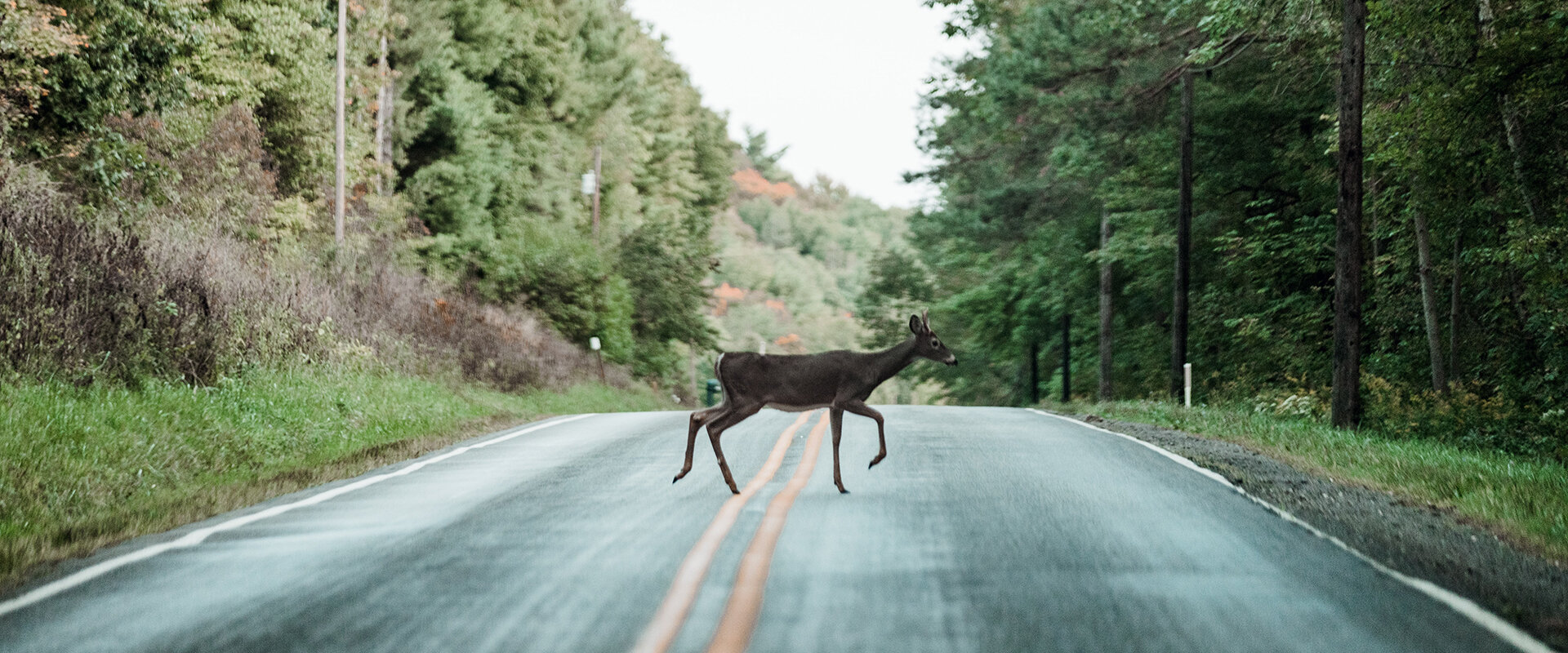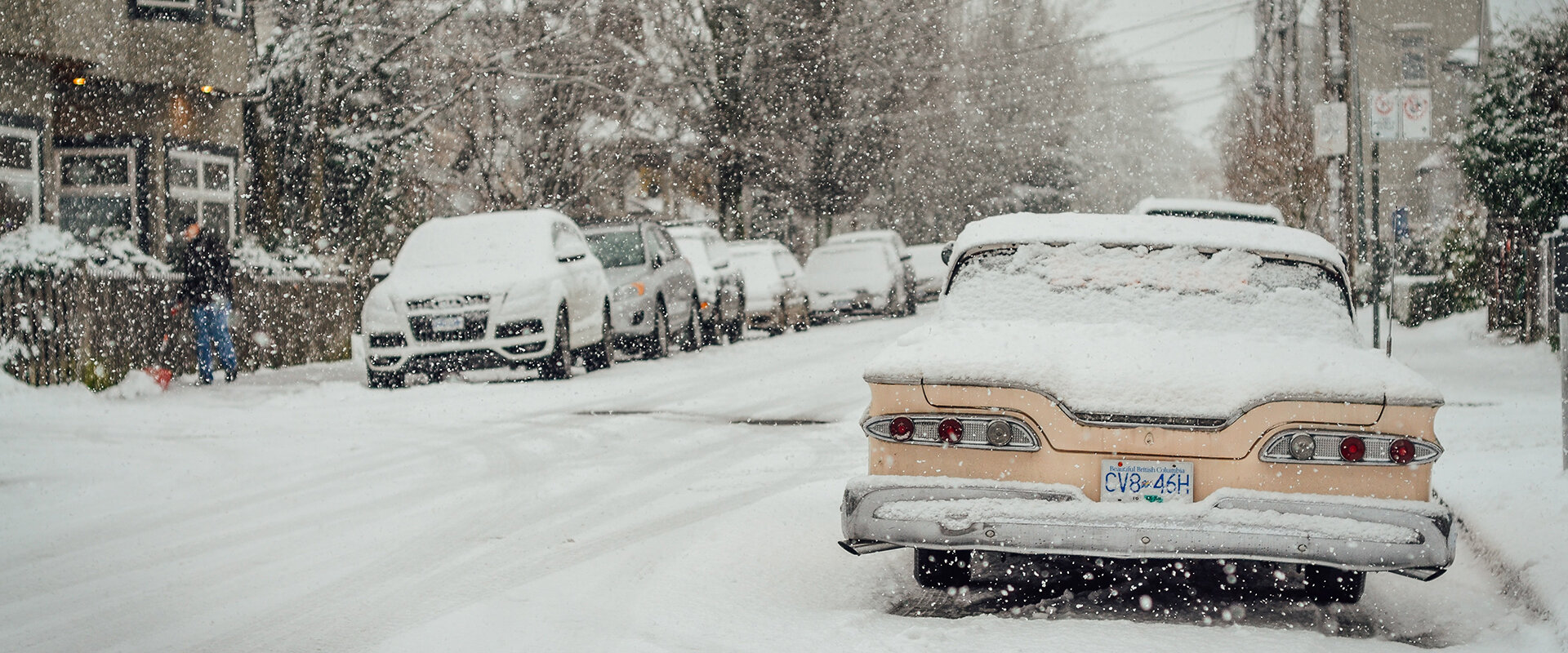An Aussie's guide to driving in Canada
As an Australian, getting behind the wheel in Canada for the first time was an odd experience. Sure, our countries are similar—wide open spaces, long highways, inconspicuous wildlife—but there was still a lot to learn about Canadian roads. After spending some time cruising down Canadian highways, I've collected my top tips that'll prepare travellers new to the country for everything Canada might throw at them while on the road.
Driving on the ‘right’ side
Yes, we left-side drivers are in the minority, but that doesn’t make switching to the other side of the road feel any less odd. If you’re anything like me, you will accidentally open the passenger-side door many, many times, and you will have to resist the urge to revert to the left side when turning at intersections. If you can, start out on some quiet streets to practice on this new way of driving before hitting the highway.
Metric rules
Your rental will probably have both miles and kilometres per hour on its speedometer. But unless you’re popping over to the U.S., you won’t be super popular with the cops if you see a 60 sign and take that to mean 60 miles per hour. The metric system is Canada's mode of measurement and speeding is punishable by fines, which vary by province and territory. Canadians are friendly, but you probably don’t want to have a chat with one as they flash their badge and ask for your license!
International licenses
I was able to pick up my first rental with my Australian Capital Territory license and passport. Canada’s provinces recognize most foreign licenses, and as long as you’re only in the country for a short period of time, that should be all you need to take to the roads. But if you’re staying longer (or your license is in a language other than English or French) it’s a good idea to pick up an international driving permit from your home country before you leave.

Intersections
Traffic lights were a bit different compared to Australia and some of the countries I’ve visited in Europe. Much of Canada allows you to turn right on a red light, as long as you have stopped first and nothing is coming. Similarly, there usually isn’t a dedicated green arrow when you turn left at an intersection: oftentimes you will need to wait for a break in oncoming traffic before crossing (it’s not as scary as it looks!).
Share the road
Cars aren’t the only vehicles travelling on Canada’s roads. Cyclists are something that drivers should especially keep their eyes peeled for while visiting Canada. Cycling is very popular in this country, especially in the larger cities, so keep an eye out for bike riders when you’re turning or planning to park. As a lover of bike rides myself, I’d really appreciate it! Then there’s the matter of staying spatially aware. It’s illegal to stop across pedestrian crossings in some areas, and streetcars (trams) may affect the flow of traffic in some downtown streets. Then, of course, there’s the wildlife…
Don’t mess with moose
My Canadian friends always joke that Australia’s wildlife is out to get you. And yes, we do have a lot of venomous, cranky animals waiting in the nearest clump of grass or waterway. But unlike Canadian moose, those critters aren’t two metres tall, they don’t weigh 700 kilograms and they don’t frequently appear on highways. Moose are just one of the large creatures you may come across on Canadian roads alongside deer and bears. Pay attention to wildlife warning signs, slow down at night, and scan both sides of the road. And do not get out of the car to approach any wildlife on the side of the road—no matter how cuddly they may look. It could save your life, or at the very least prevent a hefty repair bill!

Sightseeing
No matter where you visit in Canada, you’re going to see some really beautiful places. But don’t hold up traffic so you can get that perfect snap while you’re on the road. Many of the scenic drives through the country have dedicated pullouts on the side of the road where you can pull over, park and get pictures of some amazing vistas. And make sure you keep your hands off your phone while behind the wheel; phone-free driving is a requirement almost everywhere now, including Canada.
Long drives
Spoiler alert: Canada is big. Really big. As in, driving-for-hours-without-seeing-a-town big. If you’re planning a cross-country road trip, there will be stretches where boredom and tiredness will be impossible to avoid. This is especially true when driving through the Prairies and northern Ontario. If you have a travel buddy, make sure you swap driving shifts with them regularly. If you’re feeling tired, pull over. Even if your eyelids aren’t getting heavy, it’s still a good idea to take your time and make regular stops every couple of hours. Besides, what’s the rush? It’s a beautiful country with incredible scenery: take it easy and enjoy it safely.
Winter driving
Another spoiler alert: Canada gets chilly. While I hope to never again get behind the wheel when it’s snowing, chances are it’s something you’ll have to do if you visit early or late in the year. The roads get slippery, narrow and nasty. It’s a good idea to check for weather warnings and road closures before you head out, and to slow down once you’re out there. Clear all snow and ice from your windows, mirrors, roof and lights before you leave, and have winter tires equipped. Keep your distance from the cars in front, and beware of skidding on the icy surface. If you have tire chains, make sure you know the local rules before using them.

Parlez-vous français?
Canada is an officially bilingual country, and so many of the road signs you’ll see as you travel are in both English and French. That differs slightly in Quebe though. While there are some English signs on roads in Montreal and around federally-run national parks, most will be in French only. I was a bit intimidated by this (the best I can muster when speaking French is stammering my way through ordering a coffee). But I managed to make it through Montreal and much of rural southeastern Quebec without too much difficulty. Signs might be in French, but they still have the same shape and symbols as other parts of Canada. Just remember to arrȇt at those red octagonal signs!
Impaired driving
Marijuana may be legal in Canada, but it’s still illegal to drive while high. Similarly, driving with a blood alcohol concentration of 80 milligrams or more of alcohol per 100 millilitres of blood is illegal. Having either (or both at the same time) in your system will get you into serious trouble through fines, license suspensions or jail time. If you’re going to drink or get high, stay away from the driver’s seat and find somebody who’s sober.
The 401 experience
Given the number of sequels the Fast and the Furious franchise is pumping out, it’s only a matter of time before one is set on Ontario’s Highway 401. If you do find yourself on North America’s busiest highway, brace yourself. It’s busy, everybody is in a hurry, and the road is divided into “collector” and “express” lanes. Unless your exit is coming up soon, stick to the “express” lanes (the ones with green signs instead of blue) and you’ll be able to push straight through. Stay relaxed, drive defensively, keep out of the passing lanes and avoid being on the road during rush hour, and you’ll be fine.


